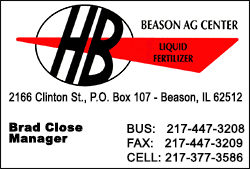|
 The original rocket-powered space plane, built to take paying
passengers on short rides into suborbital space, broke apart over
Mojave, California, on Friday during a test flight that killed one
pilot and left another seriously injured. The original rocket-powered space plane, built to take paying
passengers on short rides into suborbital space, broke apart over
Mojave, California, on Friday during a test flight that killed one
pilot and left another seriously injured.
But Virgin Galactic hopes its successor will take to the skies
before the end of 2015, keeping the company's space tourism dream
alive.
The cause of the accident is under investigation by the National
Transportation Safety Board, which is focusing on why co-pilot Mike
Alsbury, who died in the crash, unlocked the ship's movable tail
section early, before aerodynamic forces were right to keep the
structure held in place as designed.
About two seconds after the tail was unlocked, it began to swivel
outward, likely triggering the vehicle's supersonic breakup and
Alsbury's death.

The surviving pilot, Pete Siebold, 43, and Alsbury, 39, had planned
to test the so-called feathering tail system as part of
SpaceShipTwo's fourth rocket-powered test flight, the first since
Virgin Galactic decided to use a new fuel to boost the space plane
to higher altitudes.
Virgin Galactic, an offshoot of Richard Branson's London-based
Virgin Group [VIRGI.UL], and manufacturer Scaled Composites had been
eager to resume powered test flights after a 10-month hiatus.
Before the accident, SpaceShipTwo was on track to make its first
flight beyond the atmosphere by the end of the year, a key milestone
for the planned start of commercial passenger service in 2015.
Pivoting the tail section for descent increases the ship's surface
area so that it can safely and effortlessly re-enter Earth's
atmosphere, flying like a badminton shuttlecock. It had been used
dozens of times during SpaceShipTwo's atmospheric test flights,
including two rocket-powered flights.
As the ship is rocketing upward, the tail is held fast by a large
hook that is supposed to remain engaged until the craft reaches
supersonic speed, Mike Moses, Virgin Galactic vice president of
operations, explained in an interview with Reuters.
[to top of second column] |

At that point, the pilots release the hook, though the tail remains
pinned back by aerodynamic pressures. The command to actually move
the tail into descent position comes after the rocket motor burns
out, near the apex of the ship's altitude. Unlocking the tail is
done well before then so that if the mechanism fails, the pilots can
abort the flight.
"It's a great safety feature, but if you use your safety feature in
a regime that it's not designed to handle, bad things are going to
happen," Moses said. "It's like your car airbag going off at 65
miles per hour."
Virgin Galactic hopes to complete construction of the second
SpaceShipTwo in mid-2015 and begin test flights before the end of
the year, said company CEO George Whitesides. For now, its official
name is 202VG – the second series of the SpaceShipTwo family.
Informally, though, employees have taken to calling the new ship
"Hope.
(Reporting and writing by Irene Klotz in Mojave, Calif.; Editing by
Steve Gorman and Toby Chopra)
[© 2014 Thomson Reuters. All rights
reserved.] Copyright 2014 Reuters. All rights reserved. This material may not be published,
broadcast, rewritten or redistributed.

 |